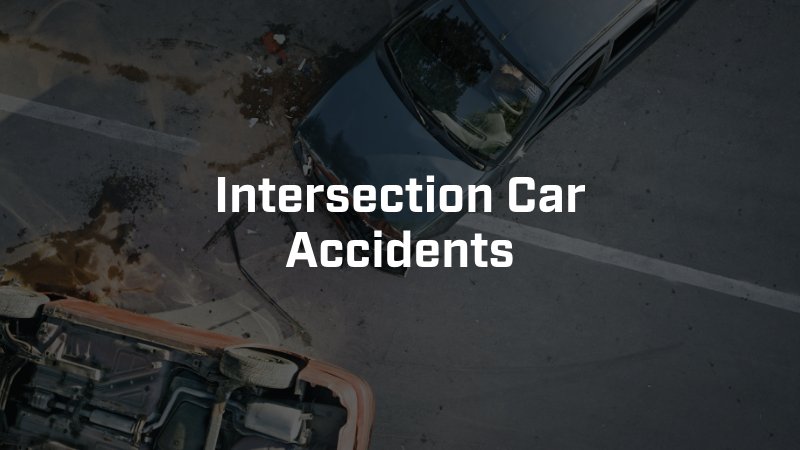Intersections are dangerous. These areas are places where vehicles heading in multiple different directions all come together, with many of the drivers in the intersection trying to go in entirely different directions. Intersections can be organized or chaotic. Sometimes, they can be organized chaos. Unfortunately, severe accidents can occur when negligent drivers travel through. Working with a Phoenix personal injury attorney in the case of an intersection accident is advised.

Liability Issues After an Intersection Car Accident in Arizona
Determining liability in intersection car accidents can be complex due to the multiple factors and parties involved. Here are some key points to consider:
- Driver negligence. Many intersection accidents occur because a driver runs a red light, fails to yield, or is distracted. In such cases, the negligent driver can be held responsible for the accident.
- Traffic signals and signs. Malfunctioning traffic signals or missing signs can contribute to accidents. If poor traffic management is a factor, the government entity responsible for maintaining the intersection may be held liable.
- Road conditions. Poorly maintained roads, lack of visibility, or unclear lane markings can also lead to accidents. In these instances, the municipal authority may be partly responsible.
- Multiple vehicles. When several vehicles are involved, determining fault can be challenging. Each driver’s actions need to be examined to understand who was negligent and to what extent.
How Intersection Accidents Happen
Intersection accidents occur for various reasons, often involving driver error or risky behaviors. Some common causes include:
- Running red lights. Drivers who speed through red lights put themselves and others at significant risk. This careless behavior is a leading cause of intersection accidents.
- Failure to yield. Many intersection crashes occur when drivers fail to yield the right-of-way, particularly when making left turns or entering an intersection from a stop sign.
- Distracted driving. Texting, taking photos or videos, talking on the phone, or other distractions can prevent drivers from noticing traffic signals or other vehicles, leading to collisions.
- Speeding. Excessive speed reduces a driver’s ability to react in time to changes in traffic conditions, making accidents more likely.
- Drunk driving. Impaired drivers generally have slower reaction times and impaired judgment, increasing the risk of accidents at intersections.
- Poor visibility. Weather conditions and obstacles like parked cars or overgrown vegetation can obscure a driver’s view, making intersections more dangerous.
Phoenix is home to several intersections known for their high accident rates. Some of the most notorious include:
- Interstate 10 and 7th Street. This busy intersection is known for heavy traffic and frequent accidents, especially during rush hours.
- Camelback Road and 19th Avenue. With numerous lanes (and confusing traffic patterns) and heavy congestion, this intersection sees a significant number of collisions.
- Thomas Road and 32nd Street. This intersection is another hotspot for accidents, often due to high traffic volume and, sometimes, people heading over to Starbucks.
- Baseline Road and Central Avenue. Accidents here are common, particularly involving left-turn collisions.
Being aware of these high-risk intersections can help drivers exercise extra caution when navigating these areas.
What Types of Compensation Are Available?
Victims of intersection car accidents may be entitled to various types of compensation. Economic damages cover the financial costs associated with the accident. This includes medical costs like hospital visits, surgeries, prescriptions, therapy, and ongoing rehabilitation. Additionally, victims can claim lost wages if their injuries prevent them from working. This includes not only the income lost during the recovery timeframe, but also any future earning losses if the injuries result in long-term or permanent disability. Property damage is another aspect of economic compensation, covering the repair or replacement costs of the vehicle and any other personal property damaged in the accident.
Non-economic damages address the intangible impacts of the accident on the victim’s life. Pain and suffering compensation is awarded for the physical pain and emotional distress caused by the accident and subsequent injuries. This can include anxiety, depression, and loss of enjoyment of life. Loss of consortium compensates for the impact of the accident on the victim’s relationship with their spouse or family, providing for loss of companionship and support. In cases where the at-fault driver’s actions were particularly reckless or egregious, punitive damages may be awarded to punish them and deter similar behavior in the future. Make sure you work with an experienced car accident attorney in Phoenix if you’ve been involved in a intersection collision.
